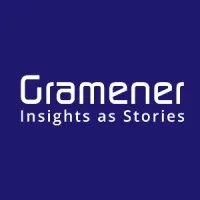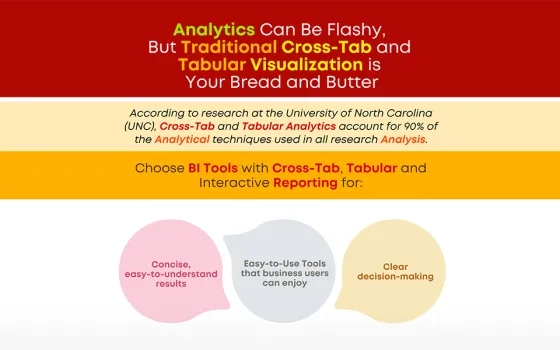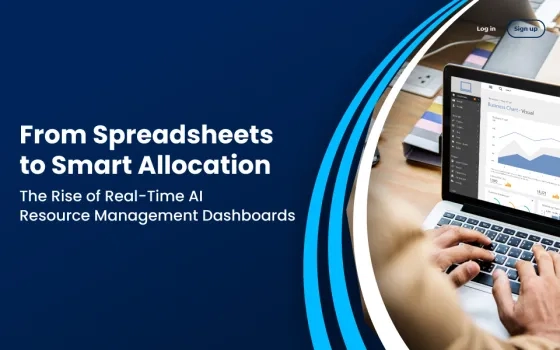Natural Language Processing, commonly known as NLP, is the computational study of human language in its spoken and written form (linguistics). NLP helps discover data patterns and perform automated tasks for multiple industries such as pharma & life sciences, technology, media, and many more.
In the pharma industry specifically, Natural Language Processing (NLP) is beneficial in analyzing medical records and assisting in overall medical tests and research. Let’s take a deeper look into how NLP benefits today’s medical sector.
Defining Natural Language Processing and How It Works
Whether spoken or written, human language defines the world. Human language is so complex that it takes years to learn and communicate effectively. It is also evolving so that linguists worldwide are constantly researching and finding new depths in its syntax and semantics.
Natural language processing allows computers to understand and process human language in the same way we do. This allows computers to understand the intent and sentiment of the speaker and respond quickly and accurately.
This technology has been around for over 50 years.
A variety of devices, including voice-assisted devices and digital assistants, use this technology on a daily basis. It also plays a crucial role in today’s life sciences industry to streamline medical research. Not only that, but it helps reduce medical risks, discover and test drugs, and reduce the overall response time.
As previously mentioned, it takes years for a human child to grasp fluency in a language. Fortunately, NLP works faster via techniques to break down the grammatical form of any language, learn its syntax and semantics, and understand the context of words spoken in a sentence.
As leaders begin their data science journeys in pharma, they have a lot to learn and explore.
Various Natural Language Processing Techniques
Broadly, NLP works through the following processing tasks.
Named Entity Recognition (NER)
Named Entity Recognition is the first step of the NLP process in which “named entities” like date, name of a place, time, quantity, numeric values, etc., are located to classify them. This helps gather critical information about the text. For example, this sentence: “On Friday night, we went to the Monterey Club.”
” Here, “Friday”, “night”, and “Monterey Club” are entities.
Tokenization
The sentences are broken down into smaller clauses or units, called tokens, to count their number and frequency. These could be broken into individual words, phrases, symbols, etc. Punctuations are also removed during this process. For example, “The weather is sunny today.” can be broken down into “The”, “weather”, “is”, “sunny”, and “today”.
Stemming and Lemmatization
Words are reduced to their most basic/root forms and standardized during stemming and lemmatization. Stemming is the grouping of related or inflected words under one root, even if the root word has no meaning. For example, “intelligent”, “intelligence”, “intelligently” have the stem “intelligent” with no meaning. In lemmatization, any word is converted into its most basic root word with a meaning. For example, “go”, “goes”, and “going” are reduced to their root word, “go”.
Natural Language Generation (NLG)
NLG generates natural-sounding text from computer data using AI. By translating computer data into plain, everyday language, allows quick responses in the healthcare industry. NLG analyzes large amounts of patient data much faster and quicker than humans.
Helping the pharmaceutical industry automate everyday operations and provide better medical care. NLG differs from NLP in the sense that it analyzes the enormous amounts of insights generated by user data.
According to a Forbes article, “The fact of the matter is that big data really can’t be understood without machine learning and advanced statistical algorithms. While it takes skill and expertise to apply these methods, once you have them running, they continue to pump out the insights.”
Sentiment Analysis
As the name suggests, this process identifies the sentiment or emotion behind a given text or speech. Although the human language is a mediator of context, every communication varies in sentiment like humor, sarcasm, pain, anger, love, happiness, etc.
In the healthcare industry, sentiment analysis within NLP can help identify different types of customer feedback, ratings (positive, negative, neutral), or queries from patients or users. This also helps medical professionals or frontline workers with real-time insights and immediate action plans.
Sentence Segmentation
This process helps break text or speech into separate sentences, just like tokenization helps break down sentences into words or phrases. This could be as simple as breaking text wherever there is a punctuation mark, but modern processes use more complex ways to identify even if the text isn’t presented clearly.
Role and Importance of NLP in the Healthcare Industry
The healthcare industry often lacks access to the social, economic, and environmental impact that medical data insights create. Healthcare providers have struggled for years with the question of how to transform big data into smart data. Thanks to NLP’s potential today, this question is no longer impossible to answer.
Medical data records now have a new context, meaning, and purpose by harnessing NLP’s algorithms, machine learning techniques, and AI. Where physicians and doctors previously spent hours analyzing different results from unstructured data, NLP brings new insights in a much shorter timespan via Electronic Health Records (EHRs). Historically, this could take weeks, months, or even years to analyze.
Tackling the Growing Wealth of Medical Data
With the rise in population, the life sciences industry is brimming with a wealth of complex human data today, varying in languages and sentiments. According to BIS Research, the volume of healthcare data was projected to have grown to 2314 exabytes by 2020. This would include patient medical records, medicine orders, doctor’s notes, genetic information, data from wearable gadgets, insurance data, social media feeds, etc.
Drawing Valuable Data Insights
The wealth of information is worthless unless we use it to extract valuable information that drives results. Without using it effectively, we’re drowning in a sea of useless information growing deeper every minute. It requires reimagining our approach, like NLP, to draw value and help structure these massive databases and draw valuable insights to streamline their operations.
Reducing Administrative Costs
NLP can bring down operating costs by helping extract helpful information from extensive unstructured data such as medical notes and automating billing operations. It removes the scope of human error, which can be a high-risk situation for the medical industry.
Fuelling Medical Innovation
With increasing unstructured data and limited time, capturing meaningful insights to fuel medical innovation is a big challenge. Moreover, there could be higher risks of scientific inaccuracy involving analytical subjectivity or human bias.
This branch of AI has and will continue to play a crucial role in enabling the pharmaceutical and life sciences industry to extract data intelligence and drive medical research and development. NLP-enabled methods could aid clinical investigators and researchers with new tools and technology to help answer medical questions that may have been puzzling scientists for years.
Benefits of Implementing NLP in Pharma and Life Sciences Industry
The benefits of using NLP in the pharma and life sciences industry are enormous. It can transform medical care and services and drastically improve results. Here are the significant benefits of implementing NLP in healthcare:
Personalized Interactions and Treatments
Human beings often react in complex ways, which may not always be the best source of medical truth. This can lead to a misguided diagnosis or even medical risks. NLP can help analyze multiple data sources to study human sentiments and responses based on social media feeds, news, research papers, etc.
This allows pharmaceutical and life sciences organizations to understand their patients’ state of mind meaningfully and connect with them. Physicians and doctors can then perform accurate diagnoses and customize their treatment plans accordingly.
Improved Patient Health Awareness
Getting an accurate, timely response from the medical department can sometimes turn into stressful hours of waiting.
There may be multiple routings, costing every minute of the call, and answers that are still not satisfactory. And even when patients have access to their medical data, comprehending medical terms can be tricky. With the application of NLP, patients and end users can get simple, understandable information in layman terms to make their health decisions.
Better Delivery of Medical Care
This branch of Artificial Intelligence also aids physicians and other healthcare staff with predictions, post-surgery assistance, and similar decision-making support. It can analyze, compare, and process databases to understand the best course of action and create care guidelines best suited for the patients.
Identify Patients with Critical Needs
NLP algorithms, specifically text analytics, work wonders in this scenario. Call operators or chatbots can analyze queries in multiple languages, get the best-fitting answers within seconds, and reduce wait time and distress. It can also help detect emotional patterns and state of mind and provide urgent care where necessary.
Anonymizing Patient Information
To protect the privacy of their patients, NLP allows healthcare providers to collect valuable feedback anonymously. For example, anonymous medical surveys can help better improve customer services while adhering to data privacy regulations. With an automated approach for anonymizing patient information, global healthcare organization can reap the benefits of AI in their industry.
Top 10 NLP Use Cases in Pharma and Life Sciences Industry
Here are ten ways that the pharmaceutical and life sciences industry makes use of NLP today:
Improving Clinical Documentation
NLP has immensely helped doctors and physicians automate the tedious tasks of EHR data entries via speech-to-text dictation. It helps free up time for providing better medical care and improves the accuracy of overall clinical documentation.
Assisting in Clinical Trial Matching
NLP helps medical professionals identify eligible candidates for clinical trials from large quantities of unstructured databases. This helps patients that need immediate medical assistance, saves lives, and accelerates innovation.
Anonymizing the personal information of clinical trial volunteers is carried out via NLP. In fact, pharmaceutical giants are using such technology for anonymizing public healthcare information.
Such solutions use NER techniques to manage patients’ Personally Identifiable Information and Protected Health Information using an automated process of entity detection, extraction, relationship management, and anonymization. This process brings down the efforts from days to hours! This enables clinical study teams to submit clinical documents to the regulatory bodies at ease.
Supporting Clinical Decisions
Healthcare providers need to access their patients’ Health data and make quick and accurate decisions. NLP helps them make fast clinical decisions, avoid human errors, and provide urgent care. It also helps diagnose, check and detect symptoms that might fly under the radar.
Enabling Predictive Analytics
NLP helps boost predictive analysis in the pharmaceutical and life sciences industries, supporting data-driven diagnosis and testing. With the ongoing global COVID-19 pandemic, this procedure is beneficial for medical professionals to analyze and predict its intensity and improve medical preparedness.
For pharma biologists, an NLP-based literature mining solution can establish a link between target, medicine, and disease.
Speech Recognition
NLP has made its mark in the healthcare industry mainly by automating the tedious tasks of taking notes. Now, physicians and doctors can transcribe EHR notes while focusing on the point of care.
Computer-Assisted Coding (CAC)
CAC helps analyze large amounts of medical documents to generate the most appropriate medical codes for maximum claims. It helps increase transparency, productivity, coding accuracy, data security and eliminates tedious manual tasks.
AI Chatbots and Virtual Scribe
AI chatbots are popular today in all walks of life. Amazon’s Alexa, Google Assistance, and Siri are a few common examples. The medical industry also utilizes chatbots and virtual scribing techniques to guide patient calls and queries to the most qualified medical assistance faster, better, and more accurately.
Data Mining Research
With the immense wealth of medical data records, extracting helpful information manually is extremely tough. By using various techniques of data mining research in NLP, healthcare providers can detect hidden patterns via statistics and convert them into useful information for driving medical research. This approach is quicker and saves critical time and eliminates human bias.
Improving Health System Quality
By law, hospitals must report the medical outcomes of specific procedures like ADR (adenoma detection rate). NLP helps accelerate this process by analyzing a larger sample of patient data and generating real-time results. Although this procedure is highly promising, NLP still has a long way to go before a large-scale adoption of this process in the medical industry.
Accelerate Turnaround Time
To conduct clinical trials, firms must identify individuals who fulfill the criteria to participate in the study. This involves manually going through millions of documents to set the trial parameters.
A global pharma manufacturer could build an automated solution that creates a 7-million document metadata repository. Using text analysis, the application generates aggregated metadata and makes them accessible through search queries. This vastly reduced the effort involved and the turnaround time.
Limitations of NLP in Pharma and Life Sciences Industry
Within the pharmaceutical and life sciences industries, NLP is still not being used to its full potential as it comes with its own set of challenges:
Medical data is only useful for generating insights if it is easily identifiable. NLP sometimes may not detect accurate data from EHRs. It analyzes sentence structures, but medical data is mostly templatized, challenging.
Analyzing subsets of natural language such as medical language or social media language is also tough using NLP. Medical terminology comes with specific terms, notes, meanings, and contexts. NLP systems may not present the most accurate results for such sub-languages.
Another limitation of using NLP is that it doesn’t understand the differences in linguistic variation.
Conclusion
According to the Harvard Business Review, “People have always communicated through stories and language, why should we expect them to change now?”
Even with its challenges, NLP offers vast benefits for the pharmaceutical and life sciences industry. The volume and complexity of medical data inflow have sharply increased with the rapid digitization of the healthcare sector due to the pandemic. NLP can help drastically minimize the time of big data analysis and bring in more accurate results.
Like any other technology, the more we use NLP to automate everyday tasks, the more accurate results we get. It is creating new and exciting opportunities today in medical research. In the future, it will play a crucial role in improving customer feedback and enhancing medical care, and diagnosing previously unknown diseases. With the ongoing global pandemic, it is imperative to use all resources at hand, including NLP, to better humanity.
Note: This article for NLP in Pharma & Lifesciences has been originally published under blog.gramener.com.

















